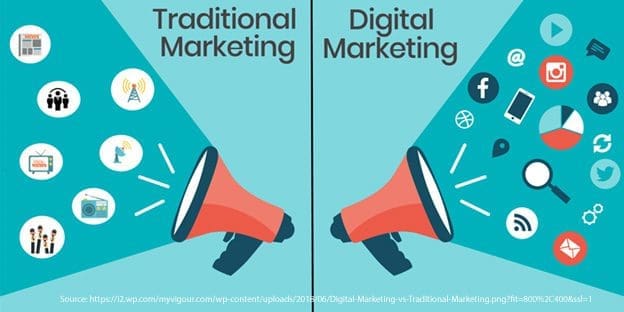There’s a lot of discussion these days about the effectiveness of traditional marketing techniques in today’s world. Some people swear by it, while others think that it’s no longer effective in today’s digital age. So, what’s the truth? Well, I decided to take a look at some recent studies on the matter to find out how traditional marketing engages these traditional markets. In this blog post, I’ll discuss what I’ve found and give you my thoughts.
What is traditional marketing, and what are its key components?
Traditional marketing has been around for a long time. It typically includes tactics like television/radio advertising, print ads, billboards, direct mail campaigns, trade shows and events, cold calling, and door-to-door sales efforts. Recently, some traditional marketing techniques have been combined with digital platforms, and over greater reach and visibility.
Questions arise about the effectiveness of traditional marketing strategies in today’s B2B market.
Recent studies on the effectiveness of traditional marketing for B2B
There have been several studies to gauge the effectiveness of traditional marketing in B2B situations. The results indicated that while some traditional tactics are still effective, others have become less so. This is due to advances in digital technology and changes in B2B customer preferences.
Additionally, traditional advertising like print ads have been found to be less effective than digital ads, banner ads, and email marketing campaigns. Direct mail marketing is still quite successful for B2B. Trade shows and events are also highly effective in B2B marketing tactics. They offer a great opportunity to meet B2B prospects face-to-face and build relationships.
Overall, it appears that traditional marketing strategies still has a place in B2B marketing strategies of many businesses. Used, however, in conjunction with digital marketing channels (in this digital world we live) and tools to maximize impact.
Traditional & digital marketing – What has changed in recent years with the growth of digital marketing?
Traditional methods have changed drastically in recent years with the growth of digital platforms and technologies. Digital marketing efforts such as social media marketing, have become an essential part of B2B marketing strategies and plans. It allows B2B companies to reach a wider audience, engage customers more effectively, and build relationships faster than ever before.
Blogs are also becoming increasingly important in B2B marketing programs. Blogs allow B2B marketers to share valuable content with their target market. Relationships can be developed to open up future sales opportunities. Blogs provide B2B marketers with direct access to customer feedback and insights to be used for future campaigns.
Short form video has also been a trend over the past few years. YouTube videos, Tic Tok videos, Instagram Reels, and others have been an effective tactic. Keep in mind though, that these new tactics must be appropriate for your target audience. They also need to fit into your marketing strategies.
In addition, search engine optimization (SEO) has been exploding and becoming more important every day. Ten years ago this wasn’t even a thing. Now there are marketers only specializing in SEO along with technological advancements to help assess keywords, search volumes and more. Over time digital channels will grow due to technology advancements that create new ways to reach customers.

What are some of the advantages of using traditional methods? What are some of the disadvantages?
Some advantages that traditional marketing have over new digital marketing include the ability to reach a large audience quickly. In addition, the personal touch that it can provide, and the fact that it has been around for so long. Traditional marketing tactics like TV ads and direct mail campaigns are proven methods of getting your message out there, but they often come with hefty price tags.
On the other hand, digital and content marketing offer a more targeted approach. This allows B2B businesses to reach their specific target audiences with much lower costs. Customer behaviors and preferences provide insight to be used on future campaigns. However, digital marketing requires a bit more creativity than traditional methods and may take longer to see results.
Traditional and digital marketing both play roles in an integrated marketing mix. Your audience and personas should lead the way.
How can businesses ensure that their traditional campaigns are effective and generate results?
Just as every marketing activity in your arsenal, your metrics and data will give you the necessary insight into your tactics. Track your campaigns with appropriate analytics and use the data to inform future decisions.
Are there any other considerations that businesses should take into account when planning a traditional campaign? Budget or resources required?
Other considerations to keep in mind when planning a traditional programs include budget, resources required, the type of audience you are targeting, and your overall strategy. Budget is an important factor to consider as it will determine how much you can spend on each activity. You also need to consider the resources that you have available, such as personnel or specialized software, and if any additional investments may be necessary. By understanding your audience and the types of messages that resonate with them will best ensure your efforts are well-targeted.
Overall, planning a successful traditional marketing effort requires careful consideration of all available resources including budget, personnel and audience preferences. With the right strategy in place, B2B marketers can still reap the benefits of traditional marketing tactics while leveraging the power of digital platforms, like online marketing and content marketing, to get even better results. A truly integrated marketing mix.
What are some common mistakes made in traditional campaigns? How can they be avoided?
Common mistakes made in traditional marketing include not setting a clear goal, failing to track and measure performance, relying too heavily on the same channels or tactics, and not considering how different audiences may respond. Just as things may have worked in the past, audience tastes and preferences are changing more rapidly now.
To avoid these common mistakes, B2B marketers should start by defining their goals for each campaign and create an actionable plan that includes tracking and measuring results over time. They should also diversify their channels and tactics (mix) to ensure that they are reaching all potential customers. Finally, they should be mindful of who their target audience is and customize their message accordingly. With the right strategy in place, B2B businesses can enjoy greater success with traditional marketing campaigns while taking advantage of other forms of digital marketing to reach more customers.
My thoughts on the effectiveness of traditional efforts for B2B
Ultimately, it comes down to the marketing mix you choose, and then what adjustments you make along the way. There is value and merit in both traditional marketing efforts and digital elements. It comes down to one thing – what are you and your business looking to accomplish? And then how are you going to get there from where you are now? That’s where your marketing strategy comes into play. What mix of tactics and programs will allow you to reach your business goal and support your marketing strategy?
To summarize
- Traditional marketing is any type of marketing that is not online.
- Common traditional marketing tactics include print ads, billboards, TV commercials and radio ads, phone calls and direct mail.
- Traditional marketing can be very expensive, particularly if you are advertising on a national or even global scale.
- One of the main advantages of traditional marketing is that it allows you to reach a large audience with your message.
- Traditional efforts can be targeted. For example you can target specific demographics with your advertising.
- A disadvantage of traditional marketing is that it can be difficult to track the results of your campaigns.
- Another disadvantage of traditional marketing is that it can be difficult to stand out from the competition, especially if they are also using traditional marketing tactics.
- If you are thinking about using traditional marketing, it is important to consider the costs and the potential return on investment before making a decision.
- You should also consider whether or not traditional marketing will be the most effective way to reach your target audience.
- There are many different types of traditional marketing, so it is important to choose the right one for your business.
- You should also consider hiring a professional marketing agency to help you plan and execute your campaign.
- Traditional marketing can be an effective way to reach your target market, but it is important to consider all of the factors before making a decision
Conclusion
It all comes down to your specific audience. What type of marketing will attract your audience’s attention? Are you going after niche communities or a larger audience? Each of these are all things to take into account when planning your marketing programs and calendar.
In conclusion, it’s clear that traditional marketing can still be an effective element in your marketing strategy when paired with the right digital tactics. While some methods like print advertising may not be as successful as they once were, others such as direct mail campaigns and trade shows are still going strong. Additionally, digital platforms like social media and blogs can help B2B marketers reach a wider audience and build relationships more quickly than ever before. Ultimately, each business will need to determine which combination of traditional and digital marketing tactics works best for them in order to maximize their success.


